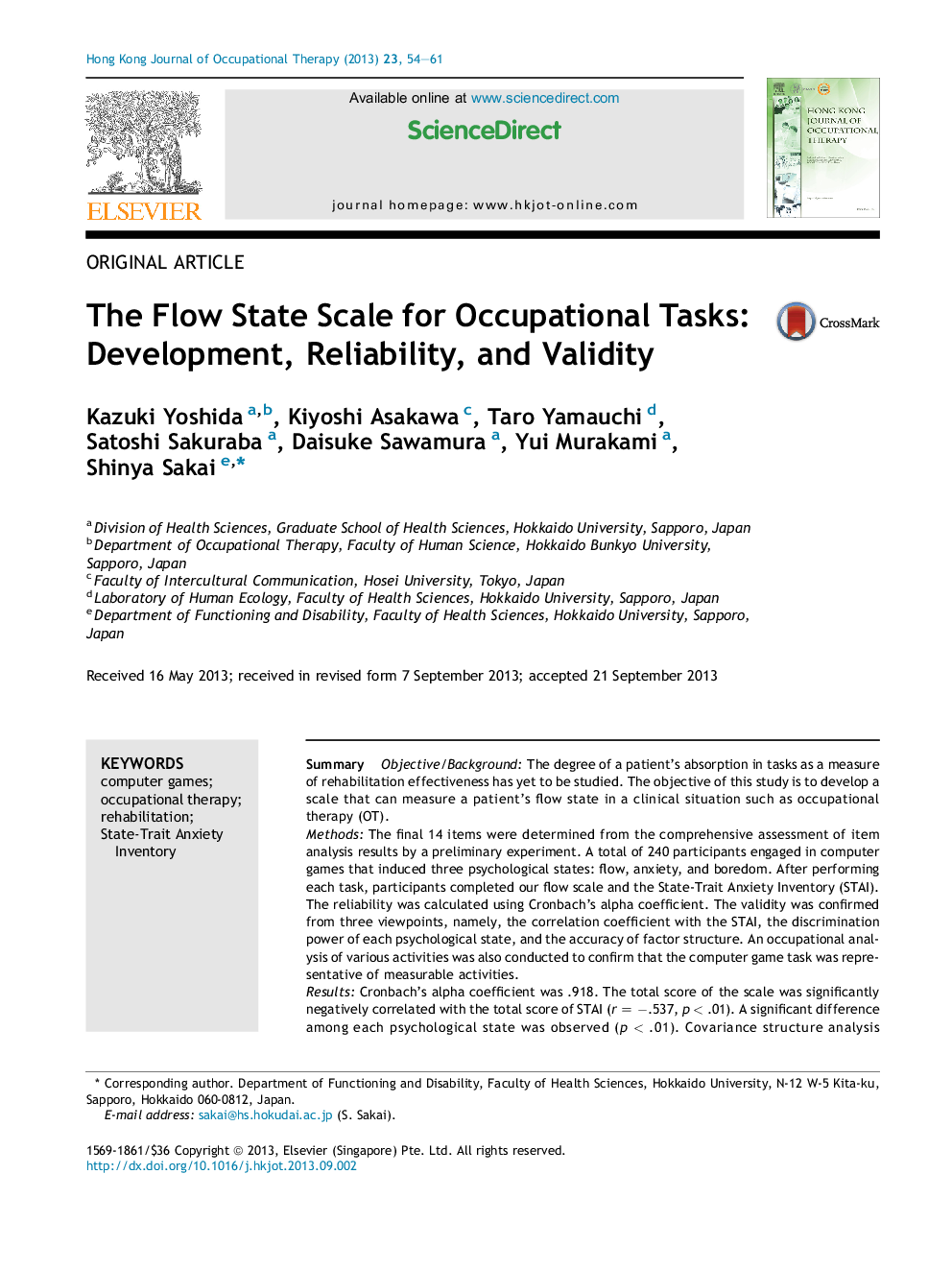| Article ID | Journal | Published Year | Pages | File Type |
|---|---|---|---|---|
| 2697387 | Hong Kong Journal of Occupational Therapy | 2013 | 8 Pages |
SummaryObjective/BackgroundThe degree of a patient's absorption in tasks as a measure of rehabilitation effectiveness has yet to be studied. The objective of this study is to develop a scale that can measure a patient's flow state in a clinical situation such as occupational therapy (OT).MethodsThe final 14 items were determined from the comprehensive assessment of item analysis results by a preliminary experiment. A total of 240 participants engaged in computer games that induced three psychological states: flow, anxiety, and boredom. After performing each task, participants completed our flow scale and the State-Trait Anxiety Inventory (STAI). The reliability was calculated using Cronbach's alpha coefficient. The validity was confirmed from three viewpoints, namely, the correlation coefficient with the STAI, the discrimination power of each psychological state, and the accuracy of factor structure. An occupational analysis of various activities was also conducted to confirm that the computer game task was representative of measurable activities.ResultsCronbach's alpha coefficient was .918. The total score of the scale was significantly negatively correlated with the total score of STAI (r = −.537, p < .01). A significant difference among each psychological state was observed (p < .01). Covariance structure analysis indicated that the model fit index showed an acceptable fit. The computer game task used in this experiment was closely related to games, crafts, learning, cooking, and playing an instrument.ConclusionOur flow scale appears to have satisfactory reliability and validity to verify quantitatively whether the occupational tasks used in OT can effectively provide a flow experience for patients.
